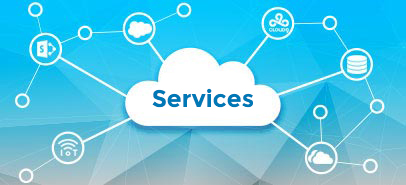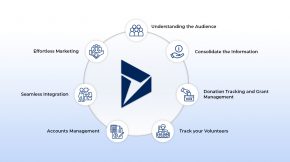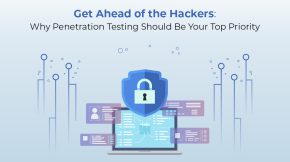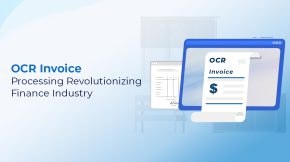Snowflake Costs Optimization: How to Spend Less and Get More from Data
You might use Snowflake now. You might be thinking about it. Either way, you care about costs. Snowflake’s pay-as-you-go setup sounds simple, but you can end up spending more than planned. That’s why Snowflake cost optimization matters. If you’ve ever asked, what is Snowflake Cost Optimization, it’s about using the right settings, understanding your usage, and making sure you’re not paying for things you don’t need.
What is Snowflake Cost Optimization?
Snowflake cost optimization is the process of making sure you get the most value from your Snowflake investment without spending more than you need to. It means understanding how Snowflake charges for compute, storage, and services, then adjusting your setup and habits to fit your workload and budget.
This isn’t about cutting corners. It’s about being thoughtful—choosing the right warehouse sizes, using features only when they help, and keeping an eye on data growth. Cost optimization is a mix of monitoring usage, setting up the right policies, and making regular adjustments so that every credit you use is spent wisely.
At its core, Snowflake cost optimization is about balance. You want to support your business needs while making sure your costs stay in check. The right approach helps you avoid surprises on your bill and ensures Snowflake continues to deliver value as your data grows.
How Snowflake pricing works
Snowflake pricing has a few parts:
- Virtual Warehouse Compute: This is the main source of spending. Every query, every job, every load uses credits. Snowflake Database cost performance optimization starts here.
- Serverless Compute: Advanced features like Search Optimization Service run on demand. If you aren’t careful, Snowflake search optimization cost can sneak up on you.
- Cloud Services Compute: These are small, ongoing charges for services like metadata and account management.
- Storage: This grows over time if you don’t manage your data. Old tables and long time travel settings can make storage costs add up.
Snowflake cloud cost optimization starts with tracking use. Most people use more credits than they expect, so watching usage patterns is a key Snowflake Cost Optimization technique.
Virtual Warehouses and cost control
Virtual warehouses are the main place where Snowflake credits get used. Picking the right size matters. Start small and only scale up if jobs are slow or queue up. Leaving a warehouse running for no reason is an easy way to waste money.
Snowflake Cost Optimization best practices say to set auto-suspend, separate workloads, and check warehouse sizes often. If you focus on Snowflake database cost performance optimization, you’ll see lower bills and better query performance.
Watch serverless features for hidden costs
Serverless compute is easy to use, but also easy to forget. Features like Search Optimization Service can help, but they cost extra. If you don’t need them, turn them off. Otherwise, Snowflake search optimization cost can grow without you noticing.
Many teams use Snowflake cloud cost optimization software to monitor serverless features and keep costs down. This is a common Snowflake Cost Optimization technique.
Cloud services compute and storage
Cloud services compute is a steady, small charge. Storage is cheap at first, but keeping unnecessary data or long retention policies can make it grow fast. Managing your data lifecycle is part of Snowflake Cost Optimization best practices.
Automating data cleanup and lifecycle policies is a good use of Snowflake cloud cost optimization software. It helps keep storage costs predictable and supports your overall Snowflake Cost Optimization.
Ways to keep costs low
Pick the right warehouse size
Right-sizing warehouses is one of the main Snowflake Cost Optimization techniques. Start with a small warehouse. If you see frequent queues, move up a size. Set auto-suspend so you’re not paying for idle time. Split ETL, reports, and ad-hoc jobs into different warehouses for better tracking.
Snowflake Database cost performance optimization is easier when you monitor each workload separately with dashboards or built-in tracking.
Use materialized views for repeated queries
If you have heavy queries that run often, materialized views can save compute credits. Schedule refreshes only when needed. This is a Snowflake Cost Optimization best practice that many teams overlook.
Snowflake cloud cost optimization software can flag queries that run often and suggest when a materialized view will help.
Manage your data life cycle
Set up data retention rules to move or delete old data. Archive rarely used data. This step is key for Snowflake cloud cost optimization and is a core part of Snowflake Cost Optimization best practices.
Write efficient queries
Inefficient queries use more credits and make your costs go up. Use filters, avoid SELECT *, and add clustering keys to large tables. Check query history for jobs that take up too many resources.
Teams who focus on Snowflake Database cost performance optimization save the most by improving their most expensive queries. Some use consultants who analyze patterns and suggest changes for better credit consumption.
Query tags and caching
Tagging queries helps you track which jobs cost the most. Caching can return results faster and save credits. Design dashboards to make use of these features. Query routing sends jobs to the right warehouse, which keeps costs and performance balanced.
Snowflake cloud cost optimization software often builds dashboards to show these patterns clearly. Tracking warehouse utilization and cache hits is a simple but powerful Snowflake Cost Optimization technique.
Find expensive queries
Check your Query History for long-running or repeated jobs. Fixing these can lower compute time and credits used. Finding heavy queries is a core part of Snowflake Cost Optimization best practices and helps you keep control as your workload grows.
When you want deeper insight, working with specialists who focus on usage data can help you spot problems and save more.
Use advanced features only when needed
Automatic clustering
Automatic clustering can help on large tables, but it costs extra credits. Weigh the speed benefit against the actual cost. It’s a place where Snowflake search optimization cost can rise fast if you leave it running without review.
Search Optimization Service
Search Optimization Service helps search large, semi-structured data faster, but you pay for it. This is a direct snowflake search optimization cost. Use it only for queries that need it.
Multi-cluster warehouses
Multi-cluster warehouses run more jobs at once, but each active cluster uses more credits. Only turn this on when you need to run many queries at once. This is a common area for snowflake Database cost performance optimization.
Monitor every cost driver
Understand Snowflake credits
Every job uses credits. Use resource monitors to set alerts so you don’t go over budget. Split credits by team or project to see which ones use the most. This is a key part of Snowflake Cost Optimization best practices.
Snowflake cloud cost optimization depends on having clear dashboards and alerts. Most snowflake cloud cost optimization software helps with this.
Track serverless features
Serverless jobs can run in the background and be easy to miss. Set up regular checks and usage policies. Good snowflake cost optimization techniques include reviewing serverless features and making sure they’re needed.
Use smart monitoring tools
Snowflake has built-in tracking, but AI-powered tools add more alerts and insights. Consulting services can help you set up or review your snowflake cost optimization techniques and get the most from your snowflake cloud cost optimization software.
Make your data pipelines efficient
Efficient pipelines reduce compute costs. Building a strong data warehouse design from the start is a foundation for snowflake cost optimization. Solid data warehouse planning prevents future cost surprises.
Cost awareness is for everyone
Train your team
People matter. Regular training on query writing and cost drivers helps everyone make better choices. Snowflake cost optimization works best when everyone knows how their actions affect spending.
Snowflake Cloud Cost Optimization software can send reports to teams, keeping everyone in the loop.
Good data governance helps
Uncontrolled data growth drives up costs. Setting up rules for retention, access, and temporary data keeps costs steady. Governance frameworks are a must for long-term Snowflake Cost Optimization.
Quick reference: Cost optimization techniques
| What you do |
Helps with |
When to use |
| Right-size warehouses |
Compute cost |
All jobs; start small |
| Materialized views |
Query performance |
Repeated, heavy queries |
| Data retention policies |
Storage cost |
Old or unneeded data |
| Query optimization |
Credit use |
Slow or expensive queries |
| Split warehouses |
Cost visibility |
By job or team |
| Caching |
Query cost and latency |
For dashboards and repeated queries |
| Resource monitors |
Budget control |
To avoid surprise bills |
| AI-powered monitoring |
Proactive alerts |
Large or changing environments |
Snowflake Cost Optimization techniques work best when you use them together.
Cost control is ongoing
Your setup will change as your data grows. Warehouses that fit now might not later. Queries might get heavier. Snowflake Cost Optimization is not a one-time fix. Snowflake Cost Optimization best practices say you should check your setup often and update your snowflake cloud cost optimization software as needed.
If you want Snowflake to work for your budget as well as your business
Beyond Key is a certified Snowflake Solutions Partner. Our experts help you get the most from your Snowflake investment, using approaches built for your needs.
Conclusion
Snowflake cost optimization is about being careful. When you right-size warehouses, track usage, and keep good data habits, your costs go down and your value goes up. Take the next step and make Snowflake work harder for your money.












